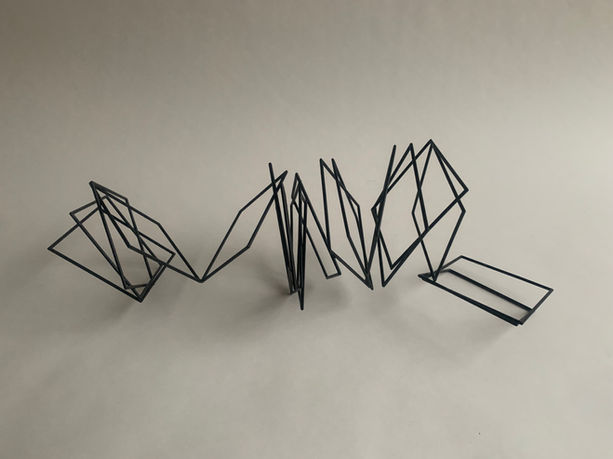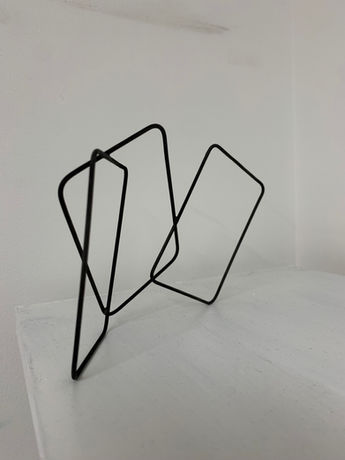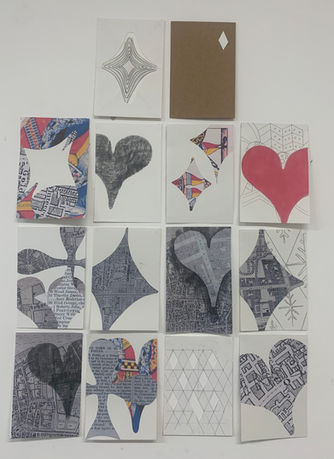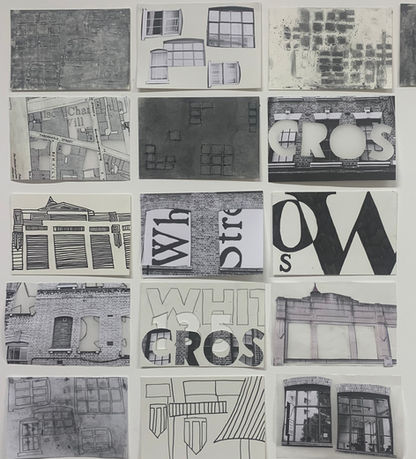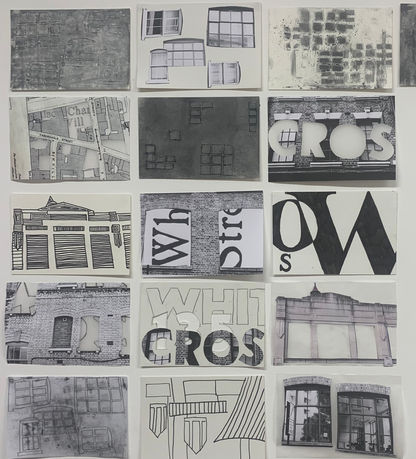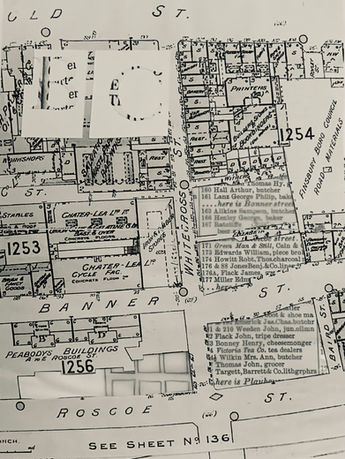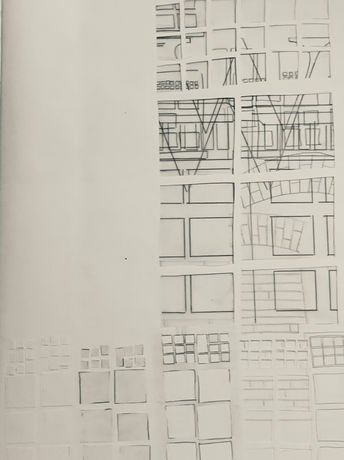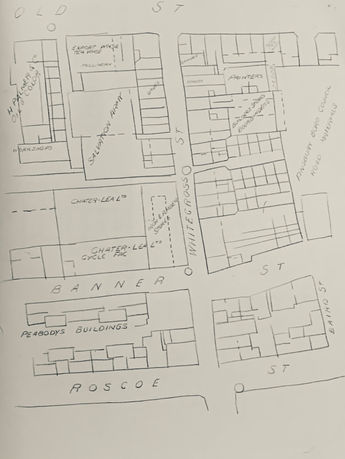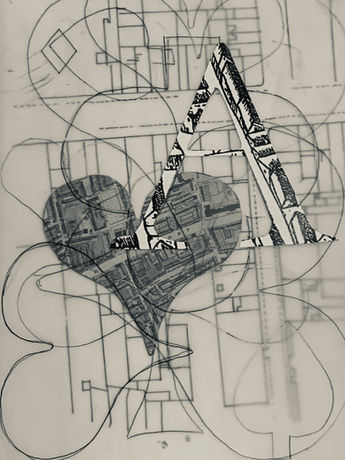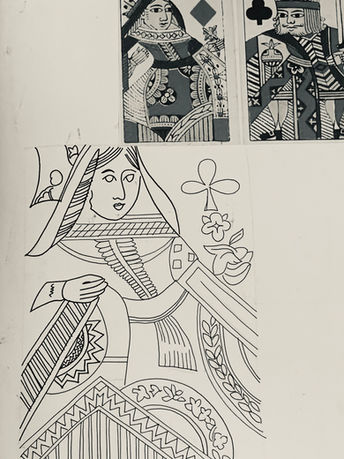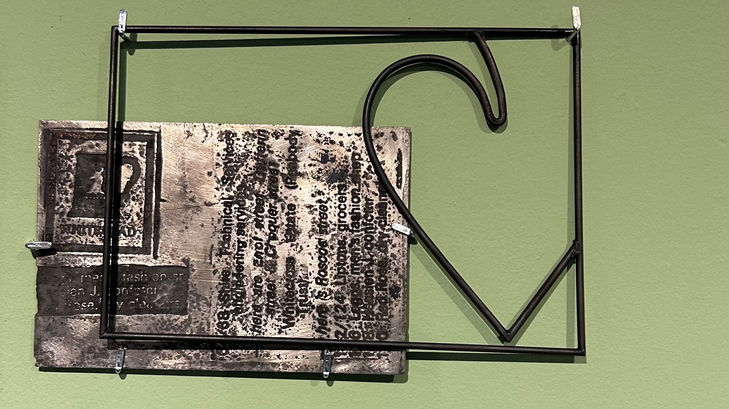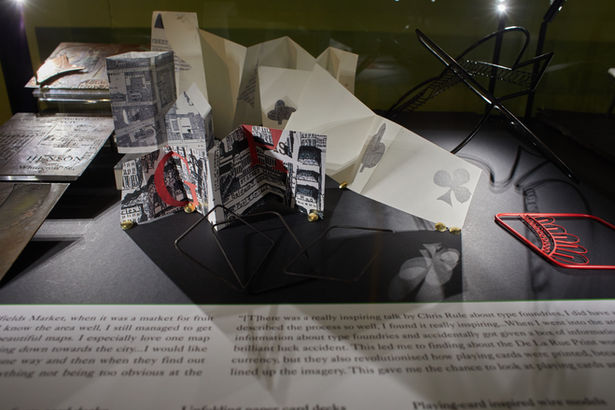Bunhill Artist in Residence
Jacky was Bunhill Artist in Residence, at St Lukes Community Centre for a year.
Sarah Guzman the Curator at Islington Museum wrote "This residency broadened her archival and community-led practice, and challenged Jacky to work in new ways as she was unable to use open flame, a critical component for metalworking, at St Luke’s studio.
Traces of Bunhill, her final artwork, is made up of eight panels, which are now permanently installed throughout Bunhill Ward. This artwork is a journey into Bunhill’s historic urban landscape and offers a glimpse into the homes, workshops, and lives of those who once inhabited it.
Jacky’s metalworking practice and her investigation into Bunhill's trades brought her to a lecture at Islington Archives on type foundries. Here, she learned about how craftsmen cast the letters, symbols and numbers used for manual printing before digitisation. As a craftsman herself, Jacky was fascinated by the physicality of manual printing, which had once required skilled metalworkers and hundreds of handcrafted components to create a single page. Jacky narrowed her focus to Islington’s printing heritage, uncovering records about William Caslon, the creator of Caslon type face, who was buried outside of St Luke’s Church and created a type-foundry that stood on Chiswell Street from 1737-1909.
During one archival appointment researching Caslon, she was accidentally given a box on De La Rue Printers, a mistake that became a key moment of inspiration. Based at 110 Bunhill Row, these printers revolutionised playing card manufacture in the Victorian period, making them more affordable by patenting an easier method for aligning face cards and standardising designs. De La Rue’s vivid and whimsical designs highlighted the intricacy of cards’ symbols and illustrations, inspiring Jacky to explore abstract wirework and experiment with perspective.
Jacky interleaved Caslon type and text drawn from maps and trade directories with photos and map sections. The playing cards were figured into keyholes that reveal layers of image and text, and inspired models of unfolding card decks that explored ways to view, hide, and revealed information through her art.
As someone who loves craftsmanship, finding out about the processes involved in creating the letters for printers was amazing. I love the fact that the making process goes through filing the letters on a steel block, then stamping this into copper, and then casting it in lead, I want to bring this use of materials into the final piece for the exhibition.
Jacky’s final artwork, Traces of Bunhill, is installed on buildings across Bunhill, creating enamelled windows into Bunhill’s past. Her collage-inspired process is clearly expressed in these pieces, with precisely extracted maps of buildings and blocks punching straight through to clipped sections of text or layers of other, older maps and building plans. These historic documents are clearly archival but displaced—centuries-old documents overlap and peek through modern materials, flattening time and bringing nineteenth century craftsmen, seventeenth century fields, and modern viewer into the same plane of existence. Her work suggests a continuum, reminding viewers that this place once belonged to someone else, that other feet walked these streets, and that we are part of a chain of overlapping but distinct moments in time.
Traces of Bunhill is an ode to the Bunhill’s generations of craftsmen and labourers, and is infused with Jacky’s respect for the artisans she researched throughout her residency. Many of the buildings that now frame these panels directly relate to the content and tell the story of the people who lived and worked in Bunhill. Ask for a map at the front desk to discover these panels yourself.















